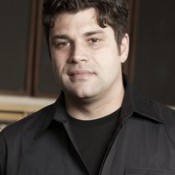The normalization of the smartphone
Where others look to Mary Meeker or a bunch of supposedly digitally savvy journalists to understand the future of technology and its impact on our culture, I look to my mother. Three years ago, she joined Facebook. After the inevitable there-goes-the-neighborhood jokes (no doubt the same ones made behind my back a few years earlier, when they let in professionals like me with dot-com email addresses), I came to understand that online social networks are not separate from real life. They are part of it.
 This month, my mother finally ditched her “feature phone” for an iPhone 4S. Usually I buy her books for Hanukkah, but that stopped when she got herself a Kindle — so this year I offered to set up the phone, load it with apps, and show her how to use them. So 2013 will be the year when my mother starts to get news on her phone. By extension, the public is no longer seeing mobile devices as novelties: They are becoming a normal, convenient, and unsurprising tool for getting information and analysis, so much so that this sentence might seem too obvious to type in 12 months’ time.
This month, my mother finally ditched her “feature phone” for an iPhone 4S. Usually I buy her books for Hanukkah, but that stopped when she got herself a Kindle — so this year I offered to set up the phone, load it with apps, and show her how to use them. So 2013 will be the year when my mother starts to get news on her phone. By extension, the public is no longer seeing mobile devices as novelties: They are becoming a normal, convenient, and unsurprising tool for getting information and analysis, so much so that this sentence might seem too obvious to type in 12 months’ time.
If the previous sentence already seems obvious, remember that you are a Nieman Lab reader and your voracious mobile news consumption routine (or mine: Tweetbot; the occasional New York Times notification for breaking news; ScoreCenter for Knicks scores and trades; Downcast for listening to On the Media while I run; a handful of email newsletters; Instapaper for things I find there and on Twitter) probably isn’t a good template for my mother, at least not now. When I showed my parents the YouTube video of the substation explosion that knocked out their power when Sandy came through, I did it on my iPhone and it was almost like doing a magic trick. She does not recoil in skeumorphobic horror at the thought of a wood-shelved rendering of a Newsstand; she wants to know what it’s for.
She wasn’t looking for news when she bought a smartphone. She thinks of it as a better cameraphone and address book that has a calendar and email. Plus there are apps, and those will be the gateway to her mobile news experience. She’s got NPR on every radio in the house, so we’ll download that one. Then there are the apps from print titles that I know she trusts (The New York Times, The New Yorker, Consumer Reports), where I see to it that her subscriptions get connected. I will get her a free trial subscription to The Awl: Weekend Companion, a new app published by my new company, because she would like pieces such as the one on crossword economics — but if family loyalty is the only thing keeping her getting it, there are forthcoming 29th Street Publishing titles that I’m sure will fit her interests. I will show her how to bookmark web sites as tiles on her home screen, and I will nudge her toward time-shifted reading and podcasting, but I know she has a lot of other things to read and listen to, and habits are hard to change, until they do.
I can’t sit over her shoulder all of the time, so mostly she’ll be on her own. Over the course of the year, her friends and my sister and I will send text messages and emails with links in them, and those will lead her in new directions. And then something big will happen — I hope not too catastrophic, but there’s always something — and that event will cause further change, even if cellphone service is disrupted for a while.
I don’t know what my mother will be doing with her phone a year from now. All I know is it will have become part of her, and those of us who gather information, tell stories that help make sense of it, and deliver them to her and to the rest of the public have to be there.



































